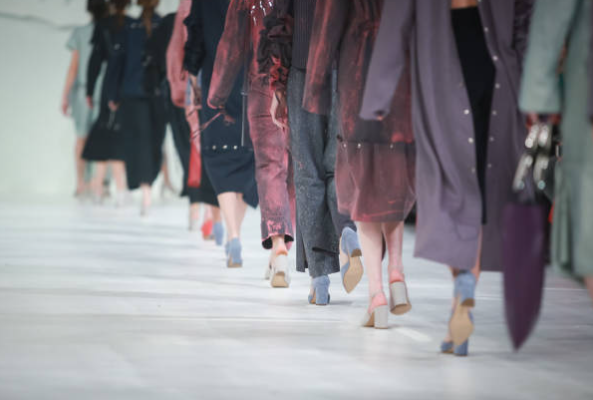

Cruelty-Free Catwalk


The fashion industry is undergoing a transformative journey, moving away from conventional practices that often sacrificed ethics and sustainability in the name of style. Today, an increasing number of fashion designers and brands are making conscious choices to embrace cruelty-free, ethical, and sustainable alternatives. In this blog, we’ll explore how these visionaries are leading the way, revolutionizing the world of fashion by creating beautiful, compassionate, and eco-conscious collections.
The fashion industry has long been criticized for its impact on the environment and for the exploitation of labor in pursuit of fast fashion. However, in recent years, consumers have become more aware of these issues, and their demand for ethical and sustainable fashion is driving change.
1. Fur-Free Fashion: A Compassionate Choice
The decision of numerous fashion houses and designers to go fur-free marks a significant milestone in the ethical fashion movement. The push to eliminate fur from collections is driven by several factors:
Faux fur, once criticized for its unnatural appearance, has undergone a transformation. Today, it replicates the warmth and elegance of real fur while ensuring that no animals are harmed in the process. Moreover, innovative textile technologies are emerging, such as lab-grown fur, which promises to further reduce the environmental impact of fur substitutes.
2. Vegan Leather: A Stylish and Ethical Substitute
Leather, a staple in fashion for centuries, has come under scrutiny for its ethical and environmental implications. Here’s why vegan leather has gained popularity:
The adoption of vegan leather represents a win-win scenario: designers can offer stylish and ethical options, and consumers can make compassionate choices without compromising on aesthetics.
3. Sustainable Fabrics: A Green Fashion Revolution
Sustainable fabrics lie at the core of ethical fashion. Designers are recognizing the importance of selecting materials that minimize environmental harm and prioritize ethical production:
Designers who prioritize sustainable fabrics recognize that fashion’s future lies in reducing its environmental impact. They are making conscious choices to source materials that benefit both the planet and the people involved in production.
4. Ethical Labor Practices: Fair Wages and Safe Conditions
The ethical fashion movement extends beyond materials; it also encompasses the well-being of the people who create fashion. Brands are taking significant steps to ensure ethical labor practices, including:
Promoting ethical labor practices is integral to the ethical fashion movement. By championing fair wages and safe conditions, designers contribute to the overall well-being of the global fashion workforce.
5. Cruelty-Free Beauty: Extending Ethics to Cosmetics
The ethical fashion movement isn’t limited to clothing; it extends to beauty products as well. Many fashion designers have recognized the importance of offering cruelty-free makeup and skincare lines. Here’s why this shift is significant:
Stella McCartney, a pioneer in sustainable fashion, offers a range of cruelty-free and vegan cosmetics that align with her commitment to ethical and environmentally responsible fashion. This shift towards compassionate beauty reflects the broader ethical fashion movement’s principles.
Sustainability is a core pillar of ethical fashion. Fashion designers are reimagining their processes and materials to reduce their carbon footprint and lessen the industry’s environmental impact. Here are some key sustainability trends in the fashion world:
1. Accessibility to Ethical Fashion
While the ethical fashion movement has gained momentum, one of the significant challenges is making ethical fashion accessible to a broader audience. Several factors contribute to this challenge:
To address these challenges, efforts are being made to bridge the accessibility gap. Some brands are working to offer more affordable sustainable options, and online marketplaces are emerging as platforms for ethical fashion brands to reach a global audience. Additionally, thrift stores and secondhand markets offer a sustainable and budget-friendly way to access ethical fashion.
2. Greenwashing and Authenticity
As the demand for ethical and sustainable fashion grows, so does the risk of greenwashing. Greenwashing refers to the practice of misleading consumers into believing that a product or brand is more environmentally friendly or ethical than it actually is. This challenge threatens the credibility of the ethical fashion movement.
Efforts are underway to create industry standards and certifications that can help consumers identify truly ethical and sustainable fashion brands. Consumer awareness campaigns are also working to shed light on deceptive marketing practices.
3. Consumer Education
Many consumers are still unaware of the impact of their fashion choices. Raising awareness about the environmental and social consequences of fast fashion and the benefits of ethical alternatives is crucial.
Consumer education is an ongoing effort, and as awareness grows, it will play a pivotal role in driving lasting change in the fashion industry.
4. Inclusivity and Diversity
The ethical fashion movement has a responsibility to prioritize inclusivity and diversity. Historically, the industry has often excluded marginalized communities, both in terms of representation and access to opportunities.
Efforts to promote inclusivity are gaining momentum. Models of various backgrounds are being featured in ethical fashion campaigns, and brands are exploring partnerships with artisans and communities in need.
5. Supply Chain Complexity
Ensuring ethical practices throughout the supply chain can be challenging, particularly for globalized manufacturing. Fashion brands often source materials and labor from various countries, each with its own regulations and practices.
Addressing the challenges associated with supply chain complexity requires collaboration between brands, suppliers, governments, and NGOs to establish ethical standards and practices that transcend borders.
6. Regulation and Policy
Regulation and policy play a critical role in shaping the fashion industry’s ethical practices. While there has been progress in some areas, comprehensive and enforceable regulations are still lacking in many regions.
The fashion industry is increasingly subject to scrutiny, and governments are beginning to take steps to regulate it more effectively. Continued advocacy and pressure on governments and industry bodies are essential to drive regulatory change.
The future of fashion lies in ethical and sustainable practices. As designers and consumers alike become more conscious of the impact of their choices, we can expect to see continued innovation and positive change in the industry. By supporting ethical fashion, we can contribute to a more compassionate, sustainable, and stylish world. From the catwalk to our daily lives, the fashion industry is evolving, embracing ethical alternatives, and redefining the very essence of beauty and style.
Sustainable Shades For many DIY enthusiasts and design aficionados, a fresh coat of paint is…
Cruelty-Free Solutions for a Healthier You Chronic inflammation can be a relentless foe, disrupting our…
Unleashing Your Brain's Potential In today's fast-paced world, maintaining sharp mental focus and cognitive agility…
Exploring DIY Organic Makeup Fixers For the eco-conscious beauty enthusiast, the quest for flawless makeup…
A Sensitive Exploration The clean beauty movement has taken the beauty world by storm. Consumers…
Taming the Mane Frizz – the bane of smooth hair dreams. It can transform a…
This website uses cookies.